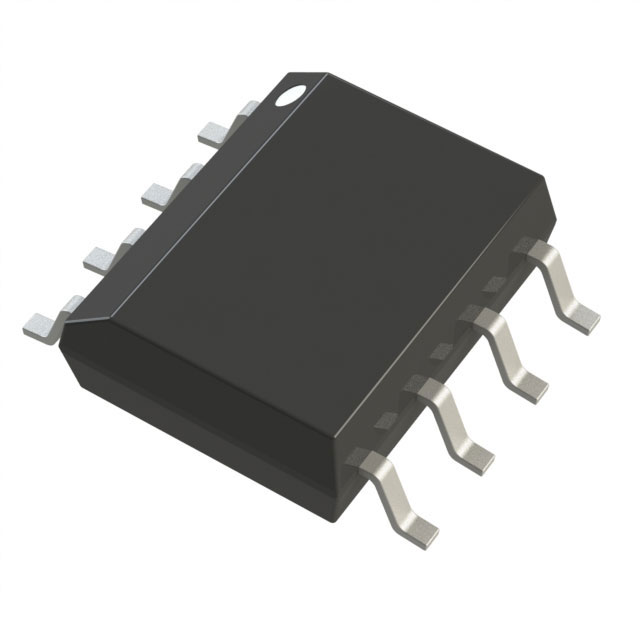Application Analysis of AD623ARZ-R7 in Industrial Signal Acquisition

The AD623ARZ-R7 Industrial Signal Acquisition Pressure Sensing Thermocouple Measurement Amplifier is crucial for collecting signals in factories. It enhances weak signals with great accuracy while consuming minimal power, making it ideal for portable gadgets. With a current draw of only 600μA, it effectively saves energy. The AD623ARZ-R7 remains accurate and stable, even in challenging conditions, and performs reliably over time and with temperature fluctuations. This amplifier can adjust its gain from 1 to 1000, allowing it to be used for various applications, such as measuring pressure or heat. Its versatility ensures it meets the demands of today’s industries.
Key Takeaways
The AD623ARZ-R7 amplifier uses little power, only 600μA. This makes it great for portable devices.
You can adjust its gain from 1 to 1000. This helps handle different signal strengths and gives accurate results.
It works well in very hot or cold places, from -40°C to +85°C. This makes it good for tough industrial jobs.
To reduce noise, proper grounding and shielding are important. This keeps signals clear in noisy factories.
Regular checks and fixes are needed to keep the AD623ARZ-R7 working well for a long time in factories.
Overview of the AD623ARZ-R7 Instrumentation Amplifier
Key Features and Specifications
The AD623ARZ-R7 amplifier has features perfect for factory use. It uses very little power, only 600 μA, saving energy. It works with a single power source from +3V to +12V. You can adjust its gain from 1 to 1000 to fit different needs.
It measures signals accurately because of its low noise level of 29 nV/√Hz. The amplifier also has a fast response with an 800 kHz bandwidth for G = 1. Below is a table of its main specifications:
Feature | Specification |
|---|---|
Quiescent Current | 550 μA |
Gain Range | 1 to 1000 |
Gain Accuracy | 0.10% for G = 1, 0.35% for G > 1 |
Noise Level | 35 nV/√Hz at 1 kHz |
Bandwidth | 800 kHz for G = 1 |
Settling Time | 20 μs for G = 10 |
Slew Rate | 0.3 V/μs |
CMRR | Up to 100 dB at 200 Hz |
Operating Temperature Range | -40°C to +85°C |
Package Style | 8-pin SOIC-8 |
These details show how well the amplifier works in tough conditions.
Advantages for Industrial Signal Acquisition
The AD623ARZ-R7 amplifier is easy to use and very accurate. It works with one power source, making it simple to set up. Its rail-to-rail output uses the full signal range, and it can handle input voltages 150 mV below ground.
It uses little power, only 550 μA, which is great for saving energy. You can adjust its gain from 1 to 1000 to handle different signal strengths. Its high accuracy, with 0.10% gain error for G = 1, ensures good measurements.
The amplifier has low noise, only 35 nV/√Hz at 1 kHz, so signals stay clear. Its wide 800 kHz bandwidth for G = 1 makes it good for fast data collection. It works in extreme temperatures from -40°C to +85°C, so it’s reliable in harsh places.
Feature | Specification |
|---|---|
Ease of Use | Single-supply operation |
Rail-to-Rail Output Swing | Achieves rail-to-rail output |
Input Voltage Range | Extends 150 mV below ground potential |
Low Power Consumption | 550 μA quiescent current |
Gain Configuration | Adjustable from 1 to 1000 |
High Precision DC Performance | 0.10% gain accuracy for G = 1 |
Noise Performance | 35 nV/√Hz at 1 kHz |
Bandwidth | 800 kHz for G = 1 |
Slew Rate | 0.3 V/μs |
CMRR | Up to 100 dB at 200 Hz |
Operating Temperature Range | -40°C to +85°C |
Package Style | 8-pin SOIC-8 package |
These features make the AD623ARZ-R7 great for jobs like measuring pressure, heat, or collecting data in tough factory settings.
How to Use AD623 for Industrial Signal Acquisition
Circuit Design and Configuration
Designing a circuit with the AD623 is simple and accurate. It uses one power source from +3V to +12V, saving energy. To set the gain, add a resistor between the RG pins. The gain (G) is found using this formula:
G = 1 + (49.4 kΩ / RG)
For example, a 10 kΩ resistor gives a gain of about 5.94. This lets you adjust the amplifier's sensitivity for different needs.
The AD623 reduces noise from motors and power lines. This is important in factories where signals can get messy. Good grounding and shielding improve its performance even more.
Input and Output Connections
Connecting the AD623 properly helps amplify signals correctly. It has two input pins: VIN+ (non-inverting) and VIN- (inverting). Attach the sensor's output to these pins, matching the polarity. It works with input voltages as low as 150 mV below ground, great for weak signals.
The output pin (VOUT) gives the amplified signal. Its rail-to-rail output uses the full signal range, making later processing more accurate. Add decoupling capacitors near the power pins to avoid distortion. These keep the power supply steady for better performance.
Calibration for Precision Applications
Calibration ensures the AD623 measures signals accurately. First, pick a gain resistor that fits your signal range. Then, test the output using a known input signal. Adjust the gain or connections if the output isn’t right.
Temperature changes can affect the amplifier in factories. The AD623 works well between -40°C and +85°C, reducing these effects. Still, regular calibration keeps it accurate over time. For example, calibrate thermocouple systems using a reference temperature to fix any drift.
The AD623ARZ-R7 amplifier is great for precise industrial tasks. Its strong design and easy setup make it dependable for automation and control systems.
Application Examples of AD623ARZ-R7 in Industrial Signal Acquisition
Pressure Sensing and Amplification
Measuring pressure is important in many factory tasks. The AD623ARZ-R7 amplifier helps boost weak signals from pressure sensors. These sensors often create very small voltages that need to be amplified for use.
The AD623 works well with piezoelectric or strain gauge pressure sensors. You can adjust its gain to match the sensor's signal strength. For instance, if the sensor gives a tiny millivolt signal, the AD623 can amplify it for easier processing.
This amplifier keeps signals clean by reducing noise. This is helpful in noisy places with heavy machines. Using the AD623 ensures accurate pressure readings, which are key for safety and efficiency in factories.
Tip: Use good grounding and shielding to reduce noise and improve signal quality.
Thermocouple Measurement and Signal Processing
Thermocouples are used in factories to check temperatures. But their signals are weak and need amplifying before use. The AD623ARZ-R7 is great for this because it’s precise and uses little power.
When connected to a thermocouple, the AD623 boosts the small voltage created by temperature differences. The amplified signal can then be sent to devices for monitoring or control. Its rail-to-rail output ensures the full signal range is available, improving accuracy.
The AD623 works well in extreme temperatures, from -40°C to +85°C. This makes it perfect for checking furnace heat or cooling systems in factories.
Note: Always calibrate thermocouple systems with a known temperature to ensure accuracy.
Data Acquisition in Harsh Industrial Environments
Factories can be tough places with heat, noise, and vibrations. The AD623ARZ-R7 amplifier is built to handle these challenges. Its strong design and wide temperature range make it reliable in such conditions.
The AD623 connects easily to sensors like pressure, temperature, and flow sensors. Its high CMRR blocks noise, giving clear signals for data systems. This is useful in factories with many noisy machines running at once.
It also uses little power, making it great for portable devices. Whether checking remote equipment or gathering data for maintenance, the AD623 works consistently.
Callout: The AD623 is flexible and fits many factory jobs, making it a key part of modern automation systems.
Troubleshooting and Best Practices for AD623ARZ-R7
Common Issues and Solutions
Using the AD623 in factories can sometimes cause problems. Knowing these issues and fixing them saves time.
Noise Interference: Loud environments may cause signal problems. Fix this by grounding and shielding wires properly. Add capacitors near power pins to keep voltage steady.
Incorrect Gain Settings: Weak or strong signals mean the gain resistor might be wrong. Use the formula below to check the gain:
G = 1 + (49.4 kΩ / RG)Change the resistor if needed.
Temperature Drift: Heat changes can make signals less accurate. Regular calibration keeps measurements correct.
Tip: Test your setup in real factory conditions to spot problems early.
Tips for Optimizing Performance
Follow these tips to make the AD623 work better:
Minimize Noise: Use short, twisted wires for inputs. This helps block interference.
Maximize Signal Quality: Keep signals within the amplifier’s range. Avoid overloading to stop distortion.
Optimize Power Supply: Use clean power. Dirty power can hurt performance.
Callout: Design your circuit carefully. Keep strong current paths away from input wires to avoid signal mixing.
Ensuring Long-Term Reliability
To keep the AD623 working well for a long time, focus on care and protection:
Choose Quality Components: Use strong resistors and capacitors that handle tough conditions.
Protect Against Environmental Factors: Shield the circuit from dust, water, and heat. The AD623 works between -40°C and +85°C but extra protection helps it last longer.
Schedule Regular Maintenance: Check and recalibrate the system often. This keeps it working properly.
Note: Write down your calibration steps and maintenance checks. This helps you fix problems faster later.
The AD623ARZ-R7 is a dependable and flexible amplifier for factories. It uses little power, works precisely, and adjusts gain easily. This makes it great for jobs like measuring pressure, checking heat, or collecting data in tough places. It stays accurate even in extreme conditions, giving steady results. Whether boosting weak signals or working in noisy areas, it performs well. Use the AD623ARZ-R7 to improve efficiency and reliability in your industrial projects.
FAQ
Why is the AD623ARZ-R7 good for factory use?
It uses little power and works in extreme temperatures. It measures signals accurately, even in tough places. You can use it for checking pressure, heat, or sensor signals.
How do you set the gain for sensors?
Add a resistor between RG pins to change the gain. Use this formula: G = 1 + (49.4 kΩ / RG). Pick the resistor based on your sensor's needs.
Can the AD623ARZ-R7 work in noisy factories?
Yes, it handles noise well. Its high CMRR blocks interference from machines. Grounding and shielding improve its performance even more.
Does the AD623ARZ-R7 work with all sensors?
It works with many sensors, like pressure and heat sensors. You can adjust its gain and use its rail-to-rail output for different tasks.
How do you keep the AD623ARZ-R7 reliable?
Protect it from dust, water, and heat. Use strong parts and calibrate it often. These steps keep it accurate and working well over time.
See Also
Enhancing Embedded Measurement Systems With AD823ARZ Amplifier
AD627ARZ: Ensuring Signal Integrity For IoT Applications
ADS1115IDGSR: Key Component For Accurate Sensor Data Capture
Unlocking Potential Of AD9910BSVZ In Radar Technology
Exploring ADM2682EBRIZ For Effective Remote Management Solutions

